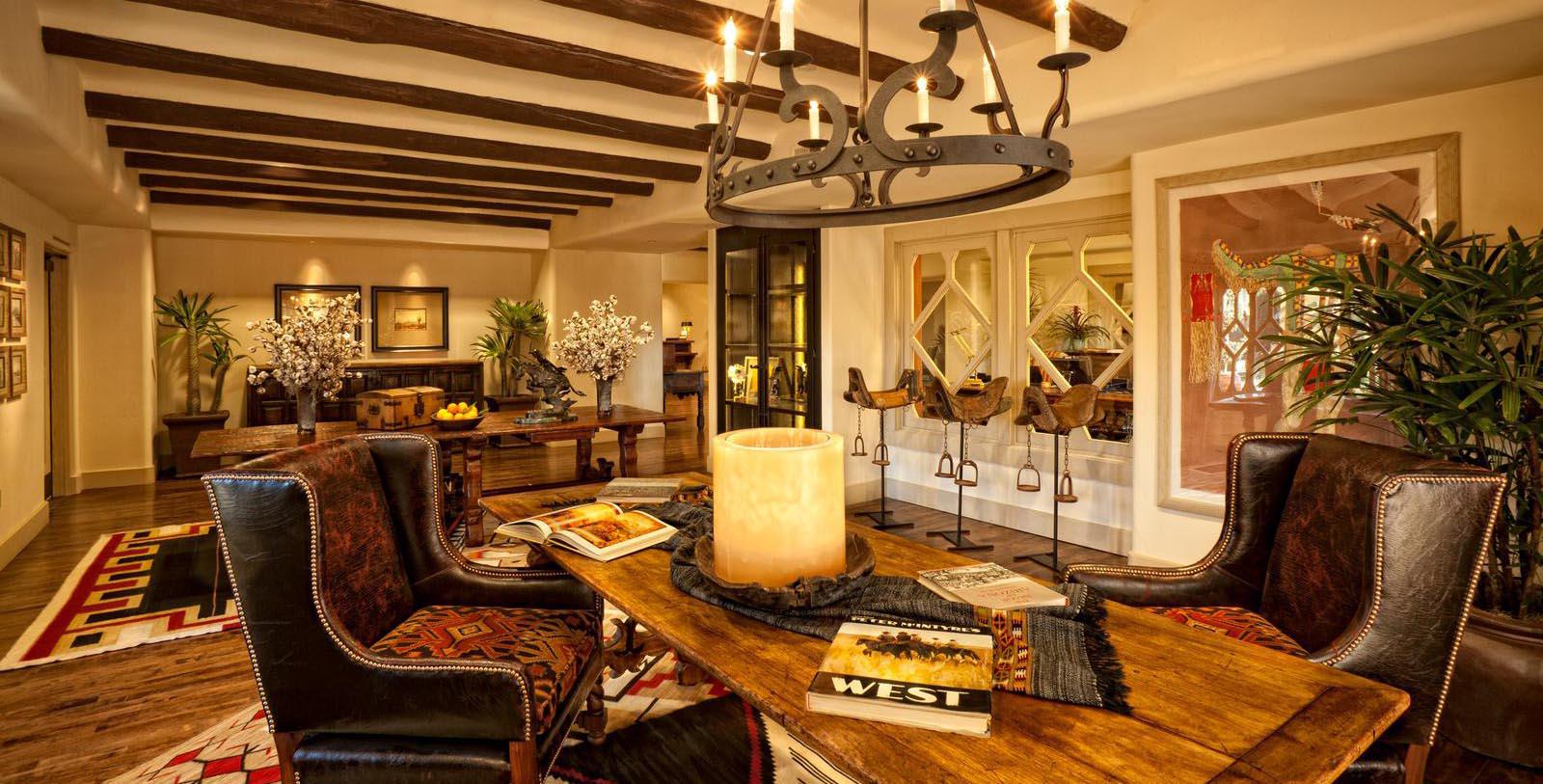Receive for Free - Discover & Explore eNewsletter monthly with advance notice of special offers, packages, and insider savings from 10% - 30% off Best Available Rates at selected hotels.
wigwam golf course litchfield park az
Discover The Wigwam's three championship-caliber courses: the Gold, Blue, and Red Courses.

The Gold Course: Wigwam Golf Club
Take a look at the Gold Golf Course. Learn about the history, design, and events that take place on the course. See why this course is revered in Arizona!
WATCH NOWStep onto the historic emerald fairways at The Wigwam—the only resort in Arizona to offer 54 holes of championship golf—and experience golf on one of the Southwest's last remaining resorts built for a pure golf experience. Scottish gardener Jacques Phillip designed the resort’s original nine holes in 1930, just a few months after The Wigwam opened. The resort was originally operated by the Goodyear Tire & Rubber Company, which had created the complex as a vacation destination for its high-ranking executives. Phillip knew that Goodyear’s executives enjoyed the game, so he used his tractor to build them a course. The tee boxes, fairways, and greens were all made of sand with thick oil on the greens to keep them from blowing away. Then, a few years later, Vernon Oren “Red” Allen—the club’s head golf professional—completed an additional nine holes, helping shape what is now Wigwam Golf Course Litchfield Park AZ. He even went ahead and planted grass on all 18 holes. The work proved to be very popular among the resort’s golf enthusiasts, who began to book tee times in great numbers. Indeed, among the first guests to golf on the redesigned fairways was a group that included accomplished golfers Jimmy Thomson, Horton Smith, and Lawson Little. In fact, Red Allen had invited them to the resort to show off the new holes personally. (The group was incredibly talented, too—Smith had won the Masters Tournament in 1934 and 1936, while Little had won both the U.S. Open and the British Open.)
The Wigwam remained an 18-hole golf course until the mid-1960s, when Allen convinced Robert Trent Jones Sr. to develop more holes on behalf of the Goodyear Tire and Rubber Company. Goodyear itself had grown envious of a new golf destination that its rival, the Firestone Tire and Rubber Company, had recently opened in Akron, Ohio. As such, Jones became their only chance to hopefully compete with the Firestone Country Club. Jones split the preexisting golf course into two new golf courses that he called the “Gold” and “Blue.” Not only did Jones thoroughly renovate the current holes, but he also created a wealth of new ones that blended seamlessly into the surrounding landscape. His work also integrated many new innovative elements into their layout, such as his iconic use of long canals and expansive fairways. The “Gold Course” was the first to open in 1965, followed by the Blue Course. Both courses immediately became one of The Wigwam’s most defining features, which inspired even more vacationers to reserve a room. To keep up with the demand, the resort commissioned Robert “Red” Lawrence to add another golf course not long thereafter. (A noted landscape architect himself, Lawrence had also designed a series of fairways at the Tubac golf Resort & Spa.) Taking months to complete, Lawrence’s new course opened to equal praise in 1972. Impressed, the resort’s staff even named the facility as the “Red Course” in his honor.
In the early 2000s, The Wigwam hired the golf course architectural firm Richardson and Danner to restore all three historic golf courses back to their former glory. The firm diligently used historical aerial photographs and the courses’ original plans to restore every fairway. Reopened in 2005, each course has since offered unique challenges that add extraordinary twists and turns. Indeed, their enchanting layout has attracted notable modern golfers like Brooks Koepka, Justin Thomas, and Bryson DeChambeau. Now nicknamed as “Arizona’s Monster,” the Gold Course covers more than 7,430 yards at par 72 and will challenge even the best golfer. But on the Blue Course, golfers will have to expand their problem-solving skills as they figure out how to negotiate several treacherous bunkers, imposing ponds, and difficult fairways. At 6,000 yards and par 70, the Blue Course offers a "sporty challenge" to golfers even with the sharpest of technical skills. Finally, Robert “Red” Lawrence’s 6,900-yard, par-72 Red Course is a natural complement to Jones’s Gold and Blue Courses. It is built alongside plenty of natural water and lush trees. Even though the fairways and greens are incredibly expansive, its finishing stretch is a test for anyone. For guests interested in a golf experience, The Wigwam offers golf packages suited to the needs of every kind of traveler from family vacations to golf-intensive trips. (Note: both the Blue and Red Courses are known as the Patriot and Heritage Courses, respectively.)
-
About the Location +
Located a few miles outside of Phoenix, the town of Litchfield Park is a historic community that was originally founded by Paul W. Litchfield in the early 20th century. Litchfield was an associate of the Goodyear Tire & Rubber Company, which was rapidly growing into one of the largest tire manufacturers in the world. Tires at the time needed cotton to strengthen their rubber coating, so a steady supply of either resource was necessary to make them profitable. Unfortunately, World War I had greatly disrupted global supply chains across the world, affecting Goodyear’s ability to acquire the cotton it desperately needed. A fair amount of its cotton imports came directly from Egypt, which was nominally governed by the British Empire. German U-boat attacks had greatly interfered with the ability of British merchants to ship the material west across the Atlantic, leading to a drop in supply throughout America. Like many other American corporations in the 1900s, Goodyear sought to further enhance its ability to control the flow of raw materials to its factories. Instead of locating a new trade partner, its executive leadership team determined that it was better to construct its own cotton-growing facility elsewhere in the southwestern United States.
Upon the suggestion of the U.S. Department of Agriculture, Goodyear sent Paul W. Litchfield to the Phoenix area to find a place suitable for a massive commercial cotton farm. He first attempted to inspire local agriculturalists to produce large quantities of cotton on Goodyear’s behalf, but encountered little interest. Undeterred, Litchfield convinced the company to allow him to produce the cotton directly. Goodyear consented and made him president of the newly founded Southwest Cotton Company. Litchfield soon acquired some 36,000 acres of land in the Salt River Valley, which soon became the heart of Goodyear’s cotton operation. But Litchfield had also set aside 5,000 acres to create a seasonal housing complex for the field workers to inhabit. Furthermore, he portioned some land to craft his own estate—Rancho La Loma—as well as a temporary executive lodging structure called the “Organization House.” The entire area was thus referred to as “Litchfield Ranch” before becoming “Litchfield Park” in 1926. Most of the earliest inhabitants of the community were Mexican and Native American men, although some had their families join them by the end of the decade. The endeavor proved to be fruitful for Goodyear, even after the Great Depression severely handicapped the economy. It handsomely rewarded Litchfield, making him both its president and board chairmen.
Litchfield himself still continued to use his ranch, eventually retiring to it in 1958. But Litchfield Park had grown into a vibrant holiday destination by this point, with The Wigwam (the former Organization House) as its central attraction. Both The Wigwam and the wider community of Litchfield Park were still firmly under the control of Goodyear, though. In 1964, Goodyear created the “Litchfield Park Land Development Company” as a means of expanding the size of the town to accommodate 90,000 residents. While Arden E. Goodyear served at the head of the enterprise, Patrick Cusick and Victor Gruen spearheaded the plan. They subsequently hired Emanuel Cartsonis to help create a general street grid that would feature 25,000 private homes. But their plan also called for the creation of 18 elementary schools, ten junior high schools, and six regular high schools, as well as both a college and junior college. While they made some headway into the project, the men experienced significant difficulties along the way. They ultimately decided to abandon the construction and sold whatever undeveloped land that was available. As a result, Litchfield grew organically into its present state over the remainder of the century.
-
About the Architecture +
Robert Trent Jones Sr.: In terms of golf course design, few have had as much an impact as the celebrated Robert Trent Jones Sr. Born in England to Welsh parents at the start of the 20th century, Jones immigrated to the United States while still a young boy. Settling down in East Rochester, New York, Jones took a job caddying at the neighboring Country Club of Rochester when he had grown a bit older. The experience was a formative one for Jones, as it instilled a deep love of the game that would never fade. Indeed, he eventually entered a youth tournament that the Country Club of Rochester and shot a record-setting score of 69! He even took a position as the club professional at the Sodus Bay Heights Country Club not long thereafter, where he further honed his skills. Unfortunately, poor health forced Jones to abandon his plans of competing again. But Jones found another opportunity to pursue golf after a wealthy friend arranged to have him visit Cornell University. Enchanted with the school, Jones enrolled to study a customized series of agricultural courses that would help him develop championship-caliber golf courses in the future. In fact, Jones got to even practice some golf course architecture at Cornell, designing nine fairways to serve as its official golf course. (Now known as the “Robert Trent Jones Golf Course,” he later expanded the size of the course to 18 holes in 1954.)
Upon completing his studies in the early 1930s, Jones attempted to find work on his own. He managed to secure a commission with the Midvale Golf and Country Club on the condition that a more experienced golf course architect act as a supervisor. As such, the club’s president brought the renowned Canadian landscaper Stanley Thompson to function as Jones’ mentor. While Jones’ work at Midvale was an eventual failure—the club actually went bankrupt—the experience inspired Jones and Thompson to form a business partnership that would last for several years. The two proceeded to create numerous golf courses in both Canada and the United States, despite the onset of the Great Depression. In some cases, the men even had to rely on labor provided directly by the Works Progress Administration to finish their assignments. (Historians today point to Jones’ designs at the Green Lakes State Park as the best example of how the Works Progress Administration enabled him to complete his projects.) Nevertheless, they had managed to create some of the best golf courses in all North America, including the Capilano Golf Club outside of Vancouver and the fairways at today’s Fairmont Banff Springs. But the relationship between them began to sour over time, especially as Jones began to have his own strong opinions regarding golf course design. Thompson and Jones thus parted ways at the end of the decade.
Jones’ first real break as an independent designer occurred when the renowned golfer Bobby Jones asked for his assistance creating the Peachtree Golf Club during the 1940s. Bobby Jones was deeply impressed with Jones’ talents and invited him to redesign the 11th and 16th holes at Augusta National Golf Club. The work on both Peachtree and Augusta generated significant national acclaim for Jones, which helped him get a wealth of additional projects. (Jones had to start using his middle name “Trent” to better distinguish himself from Bobby Jones, however.) Jones proceeded to construct and/or restore several hundred courses over the next five decades, including well-regarded renovations to the Oakland Hills Country Club, the Southern Hills Country Club, and the Baltusrol Golf Club. Perhaps the greatest work that Jones accomplished was the creation of the Robert Trent Jones Golf Trail in the late 1980s. (The trail consisted of 378 public holes at eight different sites throughout Alabama.) The popularity of Jones’ work was so great that he even had his two sons—Robert Jr. and Rees—operate satellite offices on his behalf. Jones was even enlisted to craft private courses for royal dignitaries, prominent businesspeople, and even President Dwight D. Eisenhower. In all, Jones eventually worked on a total of more than 500 golf courses in 45 U.S. states and 35 other countries! Now enshrined in the World Golf Hall of Fame, Jones is remembered fondly for his wonderful designs.
Robert Lawrence: Affectionately remembered to history as “Red,” Robert Lawrence was a prominent golf course architect whose work largely appeared in the American Southwest. His career began as a landscaper with the Westchester Country Club in 1919. Spending only a few years at Westchester, Lawrence eventually found work with the renowned architectural firm Toomey and Flynn during the Roaring Twenties. Lawrence specifically became an acolyte of William S. Flynn, serving as one of his construction superintendents. He even helped Flynn finish many important projects, like the development of the Merion Golf Club and The Cascades at The Omni Homestead Resort (another member of Historic Hotels of America.) But when the Great Depression befell the nation, Lawrence unfortunately had to leave his job with Toomey and Flynn. Moving to Boca Raton in Florida, he subsequently did golf course maintenance over the next two decades. Nevertheless, Lawrence’s influence remained strong throughout the sport of golf. Indeed, he even rose to become one of the founding members to the American Society of Golf Course Architects in 1946. Around the same time, Lawrence relocated to Arizona, where he began constructing golf courses again. His brilliant use of the local topography in his designs quickly earned him another moniker among his fellow contemporaries—the “Desert Fox.” Among the most noteworthy courses that Lawrence created while living in Arizona included the Desert Forest Golf Club, the Tubac Golf Resort and Spa’s Otero Course, and the Championship Golf Course at the University of New Mexico. Since his death in 1976, Lawrence’s designs have gained significant praise throughout the United States. In fact, Lawrence was inducted posthumously into the Arizona Golf Hall of Fame due to his accomplishments in 2003.
-
Famous Historic Golfers +
Horton Smith, winner of two major golf championships, specifically the Masters Tournament in 1934 and 1936.
Lawson Little, winner of five major golf championships, including the U.S. Amateur, the U.S. Open, the British Open.
Jimmy Thomson, professional golfer remembered for his close match against Denny Shute during the 1936 PGA Championship.
































